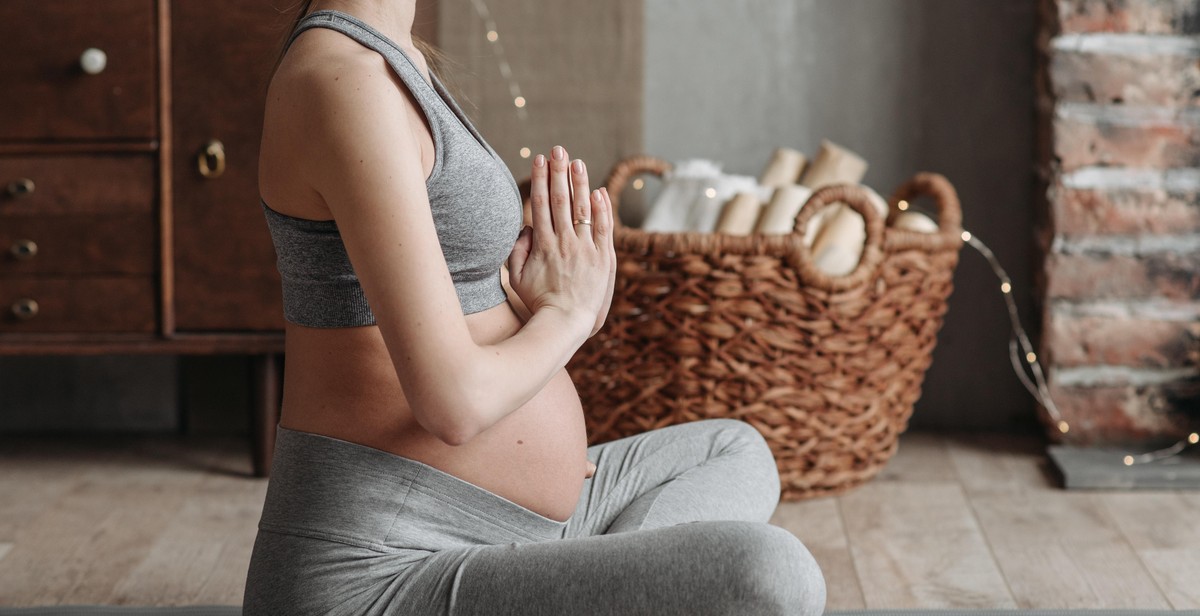How to Create a Nighttime Yoga Routine: Promoting Relaxation and Mindfulness
Yoga is a practice that can be done at any time of the day, but practicing yoga before bed can have a significant impact on your quality of sleep and overall well-being. A nighttime yoga routine is a great way to wind down after a long day, release tension, and promote relaxation and mindfulness.
Why Create a Nighttime Yoga Routine?
The benefits of a nighttime yoga routine are numerous. First and foremost, yoga is an excellent way to reduce stress and tension in both the body and mind. By practicing yoga before bed, you can release any physical and mental stress accumulated throughout the day, allowing you to fall asleep more easily and sleep more deeply.
Additionally, a nighttime yoga routine can help improve your flexibility and balance. As you move through different poses, your body will become more limber, and your muscles will become more relaxed. This can also help prevent injuries and reduce pain and discomfort.
Overall, creating a nighttime yoga routine can help promote relaxation, mindfulness, and a better night’s sleep. In the following sections, we will explore some tips and poses you can incorporate into your routine to help you get started.

Benefits of Nighttime Yoga
Nighttime yoga is an excellent way to promote relaxation and mindfulness after a long day. Incorporating yoga into your nighttime routine can provide several benefits for your mind and body. Here are some of the benefits of practicing nighttime yoga:
Promotes Relaxation
Yoga is known for its calming and relaxing effects on the mind and body. Practicing yoga before bedtime can help release tension from the body and calm the mind. The gentle stretches and poses can help ease the muscles, which can lead to a more restful night’s sleep.
Improves Sleep Quality
Yoga has been shown to improve sleep quality by reducing stress and promoting relaxation. When you practice yoga before bed, it can help quiet the mind and release tension from the body, which can lead to a deeper, more restful sleep. Additionally, yoga can help regulate your breathing, which can also contribute to better sleep quality.
Reduces Stress and Anxiety
Yoga has been shown to reduce stress and anxiety by promoting relaxation and mindfulness. Practicing yoga before bed can help quiet the mind and release tension from the body, which can reduce stress and anxiety levels. Additionally, the mindfulness aspect of yoga can help you stay present and focused on the present moment, which can also reduce feelings of stress and anxiety.
Increases Mindfulness
Yoga is a practice that encourages mindfulness and being present in the moment. Practicing yoga before bed can help you become more aware of your thoughts and emotions, which can lead to a greater sense of mindfulness. This can help you better manage stress and anxiety, as well as improve your overall well-being.
In conclusion, incorporating nighttime yoga into your routine can provide several benefits for your mind and body. From promoting relaxation and mindfulness to improving sleep quality and reducing stress and anxiety, practicing yoga before bed can help you feel more rested, calm, and rejuvenated.

Preparing for Your Nighttime Yoga Routine
Creating a nighttime yoga routine can be a great way to promote relaxation and mindfulness before bed. To get the most out of your practice, it’s important to prepare your space and body beforehand. Here are some tips to help you get started:
Choose a Quiet and Relaxing Space
Find a quiet and comfortable space in your home where you can practice without distractions. This could be a spare room, a corner of your bedroom, or even your living room. Whatever space you choose, make sure it’s clean and clutter-free. You may also want to dim the lights or light some candles to create a calming atmosphere.
Wear Comfortable Clothing
Wear loose, comfortable clothing that allows you to move freely. Avoid anything too tight or restrictive, as it can interfere with your practice. Choose fabrics that are breathable and lightweight, such as cotton or bamboo, to help regulate your body temperature.
Use Props to Enhance Your Practice
Props can be a great way to enhance your practice and make it more comfortable. Consider using a yoga mat for better grip and to cushion your joints. You may also want to use blocks, blankets, or bolsters to support your body in certain poses. These props can help you deepen your stretches and stay in poses for longer periods of time.
By following these tips, you can create a relaxing and effective nighttime yoga routine that helps you unwind and prepare for a restful night’s sleep.

Nighttime Yoga Poses
Yoga is an ancient practice that has been around for thousands of years. It is a great way to promote relaxation and mindfulness, especially before bedtime. Here are some nighttime yoga poses that will help you unwind and prepare for a good night’s sleep:
Child’s Pose
Child’s Pose is a gentle yoga pose that helps to stretch the hips, thighs, and ankles. It also helps to calm the mind and relieve stress. To do this pose, start on your hands and knees, then sit back on your heels and stretch your arms forward. Rest your forehead on the mat and breathe deeply for a few minutes.
Forward Fold
Forward Fold is a great way to stretch the hamstrings and lower back. It also helps to calm the mind and relieve stress. To do this pose, stand with your feet hip-width apart, then bend forward from the hips and reach for your toes. Let your head hang heavy and breathe deeply for a few minutes.
Downward-Facing Dog
Downward-Facing Dog is a popular yoga pose that helps to stretch the hamstrings, calves, and spine. It also helps to calm the mind and relieve stress. To do this pose, start on your hands and knees, then lift your hips up and back into an inverted V-shape. Press your hands and feet into the mat and breathe deeply for a few minutes.
Cat-Cow Stretch
Cat-Cow Stretch is a gentle yoga pose that helps to stretch the spine and relieve tension in the neck and shoulders. It also helps to calm the mind and relieve stress. To do this pose, start on your hands and knees, then arch your back up towards the ceiling (cat pose). Then, lower your back down towards the floor and lift your head up (cow pose). Repeat for a few minutes.
Seated Forward Bend
Seated Forward Bend is a great way to stretch the hamstrings and lower back. It also helps to calm the mind and relieve stress. To do this pose, sit on the floor with your legs straight in front of you, then reach forward and try to touch your toes. Let your head hang heavy and breathe deeply for a few minutes.
Corpse Pose
Corpse Pose is a relaxing yoga pose that helps to calm the mind and prepare the body for sleep. To do this pose, lie on your back with your arms and legs extended, then close your eyes and breathe deeply for a few minutes. Let your body relax completely and release any tension or stress.
These nighttime yoga poses will help you relax and unwind before bed, promoting a peaceful and restful night’s sleep.

Breathing Techniques for Relaxation
Breathing techniques are an essential part of any yoga routine, especially when trying to promote relaxation and mindfulness. Here are two breathing techniques that can help you achieve a calm and peaceful state:
Deep Belly Breathing
Deep belly breathing, also known as diaphragmatic breathing, involves taking deep breaths that expand the belly rather than the chest. This technique can help reduce stress and anxiety by slowing down the heart rate and relaxing the body.
To practice deep belly breathing, start by finding a comfortable seated or lying position. Place one hand on your belly and the other on your chest. Inhale deeply through your nose, feeling your belly rise and expand. Exhale slowly through your mouth, feeling your belly fall. Repeat for several breaths, focusing on the sensation of your breath moving in and out of your body.
Alternate Nostril Breathing
Alternate nostril breathing, also known as Nadi Shodhana, is a pranayama technique that helps balance the body’s energy and calm the mind. This technique involves breathing through one nostril at a time while blocking the other nostril with your fingers.
To practice alternate nostril breathing, sit in a comfortable position with your spine straight. Use your right thumb to close your right nostril and inhale deeply through your left nostril. Pause briefly, then use your right ring finger to close your left nostril and exhale through your right nostril. Inhale through your right nostril, pause, then exhale through your left nostril. Repeat for several rounds, focusing on the rhythm of your breath and the sensation of air moving through your nostrils.
Both of these breathing techniques can be practiced on their own or incorporated into a nighttime yoga routine to promote relaxation and mindfulness.

Conclusion
Creating a nighttime yoga routine is an excellent way to promote relaxation and mindfulness. It can help you unwind after a long day and prepare your mind and body for a restful sleep. By incorporating gentle stretches, deep breathing, and meditation into your routine, you can reduce stress, anxiety, and tension in your body.
Remember to start slowly and listen to your body. It’s essential to find a routine that works for you and your schedule. You can also personalize your routine by adding your favorite yoga poses or meditation techniques.
Before starting your nighttime yoga routine, make sure to create a calming environment in your bedroom. You can dim the lights, light some candles, or play relaxing music to set the mood.
By committing to a regular nighttime yoga routine, you can improve your sleep quality, reduce stress levels, and enhance your overall well-being. So, take the time to create a routine that works for you, and enjoy the many benefits of nighttime yoga.
| Benefits of Nighttime Yoga |
|---|
| Reduces stress and anxiety levels |
| Improves sleep quality |
| Enhances overall well-being |
| Increases flexibility and range of motion |
| Calms the mind and body |
Start your nighttime yoga routine today and experience the positive effects on your mind, body, and soul.
